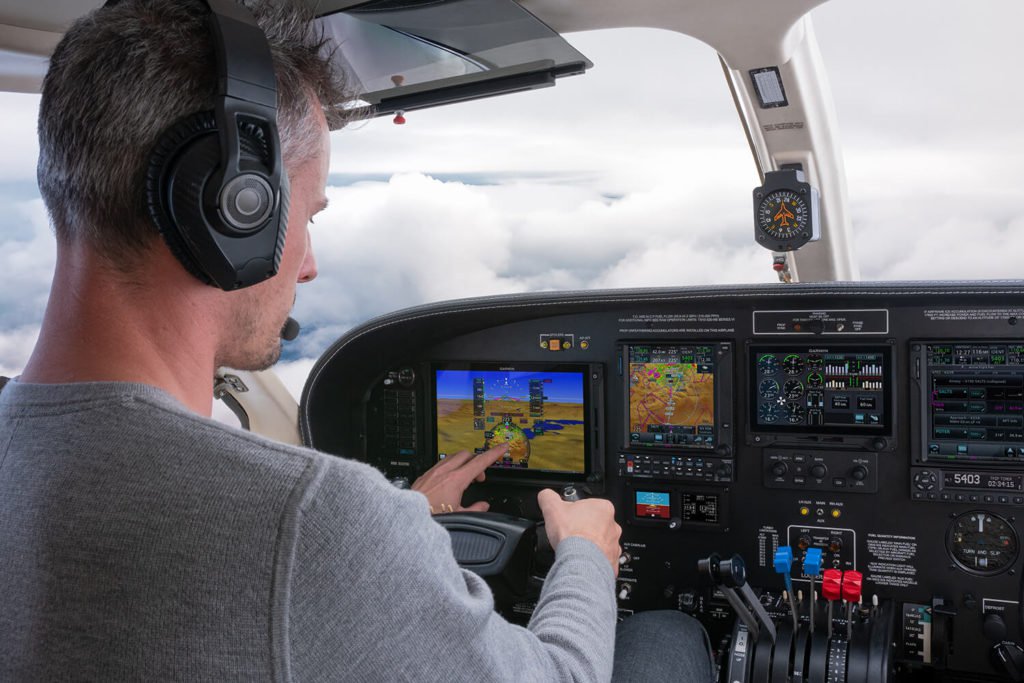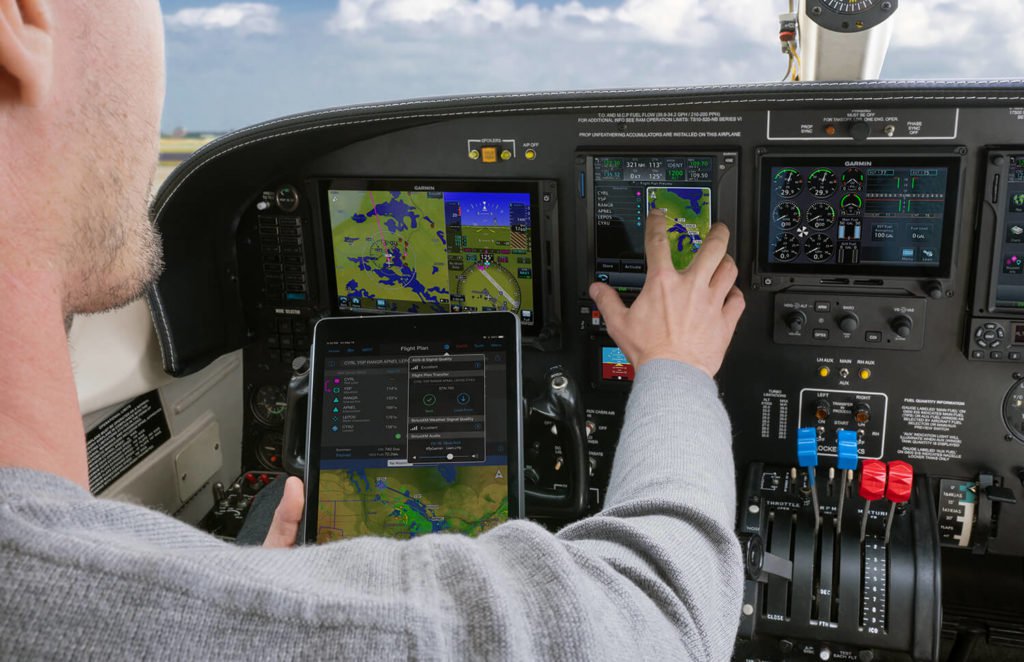Garmin Ambassador Pete McLeod: Owning, Operating and Upgrading a Cessna 414
Every aircraft owner has a unique mission. And every
airplane has an ideal role. Finding the perfect balance can help establish a
successful partnership between airplane and owner. Garmin ambassador and air
race pilot Pete McLeod understands the formula well — he owns and operates a
1977 Cessna 414. His missions vary from business to pleasure, but above all, he
loves having the opportunity to fly himself to locations all over North
America. Pete explained his process in choosing an airplane that fit his needs,
and how upgrading the vintage ’70s aircraft with modern Garmin avionics not
only expanded the capabilities of his aircraft, but also increased his
confidence when flying it.
Growing up in a land where
aviation is a necessity
In Canada not all destinations are accessible by road. Like many
remote parts of the world, general aviation is an essential part of life for
many in Canada, especially Pete.
“I grew up in a small town in Northern Canada — Red Lake, Ontario.
Although serviced by a paved road, Red Lake sits at the ‘end of the road,’ and
if you want to go any further north, or to any destination off the single road
access, an airplane was the only way,” he said. “In a location where aviation
is more necessity than luxury, flying is a way of life, and is ingrained in the
cultural fabric of the people who live and work here.”
Airplanes are a part of the fabric of life in places like
Canada. It’s just a matter of finding the right one.

Outlining a mission, identifying
an airplane
For Pete, finding the right airplane started with defining
his mission profile. He needed to determine the role an airplane would play,
how it would be helpful in his business and personal travels, and where he
would conduct his typical flights.
“My mission required a capable and reliable IFR
cross-country aircraft. Many of my flights are over remote terrain or water, so
the systems and powerplant redundancy of a multi-engine [aircraft]was a
priority,” he said.
Once his mission was established, it was time to start
looking at the market. The light twin-engine piston market satisfied Pete’s
mission profile and made a lot of economic sense.
“The systems, performance and capability of the legacy
piston-twin aircraft segment are very affordable compared to newer aircraft and
turbine variants, so the category also maximized utility within my budget,” he
said. By choosing a legacy aircraft like the Cessna 414, he combined the
benefits of a proven airframe with a cost-effective investment. “The 414 has a
great mix of speed and altitude flexibility for an aircraft of its class. It’s
comfortable for the pilot and passengers, reliable, and it offers tremendous
overall performance for the price of purchase and operation,” he added.
21st century
technology in a 20th century airframe
Improving the performance of an aircraft beyond its original
specifications is not always an easy task. Flying faster or higher can sometimes
be accomplished with airframe or powerplant modifications, but these options
aren’t always available, or don’t make economic sense. An upgrade to the
avionics, however, can increase the capabilities and sometimes offer improvements
in a few performance categories. For example, some larger aircraft can benefit
from weight savings with an avionics upgrade, allowing additional passengers or
luggage with the same fuel load.
LPV approach capability can be achieved with an avionics upgrade. By adding a modern GPS navigator — like our GTN 750/650 series — pilots can take advantage of GPS precision for instrument approaches and increase the number of IFR-accessible airports. With a modern digital engine information system, available in our TXi series flight displays, pilots can optimize in-flight engine performance and fuel consumption. Pilots and technicians can also review engine performance data to monitor the overall health of an engine.

Modern avionics technology can also help improve a pilot’s
performance in the cockpit. Advanced features, wireless connectivity and intuitive
user interfaces have been designed to help reduce pilot workload and increase
situational awareness within the flight environment.
“My aircraft is relatively complex, and I fly it single
pilot IFR in and out of airports and airspace of all sizes and complexity. The
technology in my cockpit has made flying single-pilot, multi-[engine]-IFR much
more manageable, organized and predictable,” Pete said.
His Cessna 414 features G600 TXi touchscreen flight displays for primary flight displays, multifunction displays and engine information system gauges. Dual Garmin GTN 750 navigators give him GPS precision, LPV approach capability, easy-to-use comms and flight planning tools, plus additional options for viewing navaids, traffic, overlaying geo-referenced charts and more.
“It’s like having a great co-pilot on board! No longer do I
dread getting a complex clearance completely different than filed — flight plan
programing is quick and easy. Juggling weather, traffic and terrain en route —
I still rely on planning and ATC for help — but now I see everything directly
in front of me long before I even hear from ATC on the issue,” he said. “The
ability for me to competently and confidently complete a flight is the biggest
benefit I have gained from my avionics upgrade – and that makes the flying all
the more enjoyable!”
And with a Garmin GWX doppler weather radar in the nose,
real-time weather tracking and analysis displayed on the TXi and GTN 750s help increase
certainty when navigating around storm cells.

One airplane, endless
opportunities
Whether it’s a business flight or taking the family on vacation,
Pete’s Cessna 414 fulfills a number of different roles. We asked him about his
favorite flights in the airplane:
“I took my daughter for her first flight at 5 weeks old.
And, how about three friends, three deer, a truck-bed full of gear onboard and
302 knots ground speed in cruise — it was a heck of a tailwind. We spent the
day hunting, then turned what would be a 17-hour drive into a two-and-a-half-hour
flight directly home.”
Pete McLeod is a Garmin-sponsored athlete and ambassador.
For more information about the Garmin avionics he uses in his aircraft, visit garmin.com/aviation.
The post Garmin Ambassador Pete McLeod: Owning, Operating and Upgrading a Cessna 414 appeared first on Garmin Blog.
https://www.garmin.com/en-US/blog/aviation/garmin-ambassador-pete-mcleod-owning-operating-and-upgrading-a-cessna-414/
